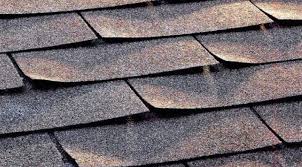A roof is an essential component of any home, providing protection from the elements and contributing to overall structural integrity. Over time, however, roofs can deteriorate due to age, weather, or insufficient maintenance. Recognizing when it’s time to replace your roof is critical to preventing damage
Signs of Aging and Wear on Your Roof
Roofs naturally age, and their condition often reflects how long they’ve been in place. Asphalt shingles, for example, typically last 20-30 years, while metal or tile roofs can endure for decades longer. If your roof has surpassed its expected lifespan, it indicates that a replacement might be needed. Aging roofs may develop curled or buckled shingles, compromising their ability to shield against water. Cracks, bald spots, or missing shingles suggest the materials are worn out.
Another sign of aging is the appearance of moss, algae, or lichen on the surface. While these growths might seem harmless, they can trap moisture, leading to further deterioration. Inspecting your roof for visible sagging or uneven areas is equally important, as these can indicate structural weakening. Regular maintenance and professional inspections are key to identifying these issues early, but replacing the roof becomes necessary to protect your home when they accumulate.
Leaks and Water Damage
One of the most obvious signs that it’s time to replace your roof is persistent leaks or water damage inside your home. Stains on ceilings or walls often indicate water seeping through the roof. While minor leaks might b
Pay attention to your attic, as it often provides the first clues of roof failure. These are red flags if you notice sunlight streaming through the roof boards or detect dampness in the insulation. Flashing around chimneys, vents, and skylights can also wear out, leading to water penetration. Replacing the roof ensures that you address the root cause rather than continually patching recurring leaks, ultimately preserving the safety and value of your home.
Damage from Storms and Severe Weather
Severe weather events can damage your roof, even if it appears undamaged at first glance. Hail, high winds, and heavy rain can loosen shingles, create punctures, or dislodge flashing. After a storm, inspecting your roof for missing or damaged shingles, granules in gutters, or dented areas is critical. Sometimes, storm damage is subtle but still compromises the roof’s ability to perform.
Roofs are more susceptible to wear and tear in regions prone to extreme weather. Prolonged exposure to intense sunlight can also cause materials to become brittle and lose their protective qualities. If you frequently deal with adverse weather conditions, consider whether your roof can still provide adequate protection. Replacing your roof with materials designed to withstand such conditions can provide peace of mind and enhance durability for years.
Increasing Energy Bills
An aging or damaged roof can also impact your home’s energy efficiency, leading to higher heating and cooling costs. If your energy bills rise without explanation, your roof might contribute to the problem. Poor insulation and ventilation and gaps or leaks in the roofing material allow air to escape or enter your home, forcing your HVAC system to work harder.
Replacing your
Read more : What to Expect in a Plastic Surgery Consultation
Decreasing Curb Appeal
The visual appearance of your roof plays a significant role in your home’s curb appeal. An old, discolored, or damaged roof can detract from your home’s overall aesthetic, potentially lowering its market value. If you plan to sell your property, replacing the roof can be a worthwhile investment to attract buyers and secure a better price.
Look for visible signs such as faded shingles, inconsistent coloring, or missing pieces that make your roof look worn out. A replacement allows you to select modern, durable materials that improve functionality and complement your home’s design. Whether you prefer classic asphalt shingles, metal panels, or clay tiles, updating your roof enhances its appearance and creates a positive impression for visitors and potential buyers.
Understanding when to replace your roof is a crucial part of homeownership that can save you significant time, money, and stress. Numerous signs indicate it’s time for a new roof, from aging materials and water damage to the impact of storms and rising energy costs. We have explored these indicators, emphasizing the importance of timely replacement to maintain your home’s functionality and curb appeal. A new roof is an investment in your property’s safety and an opportunity to enhance energy efficiency and overall value, ensuring your home remains a comfortable and secure haven for years to come.
